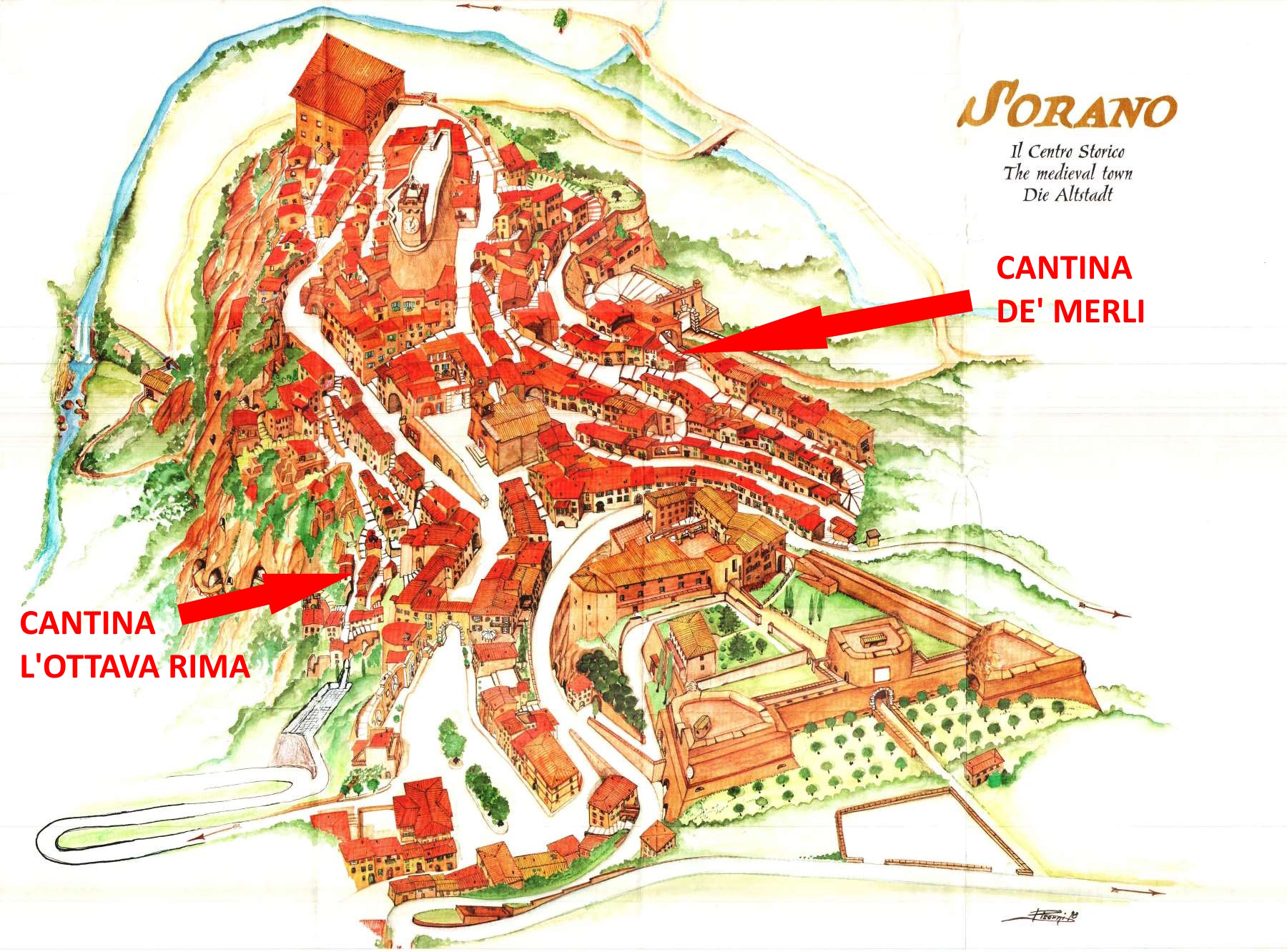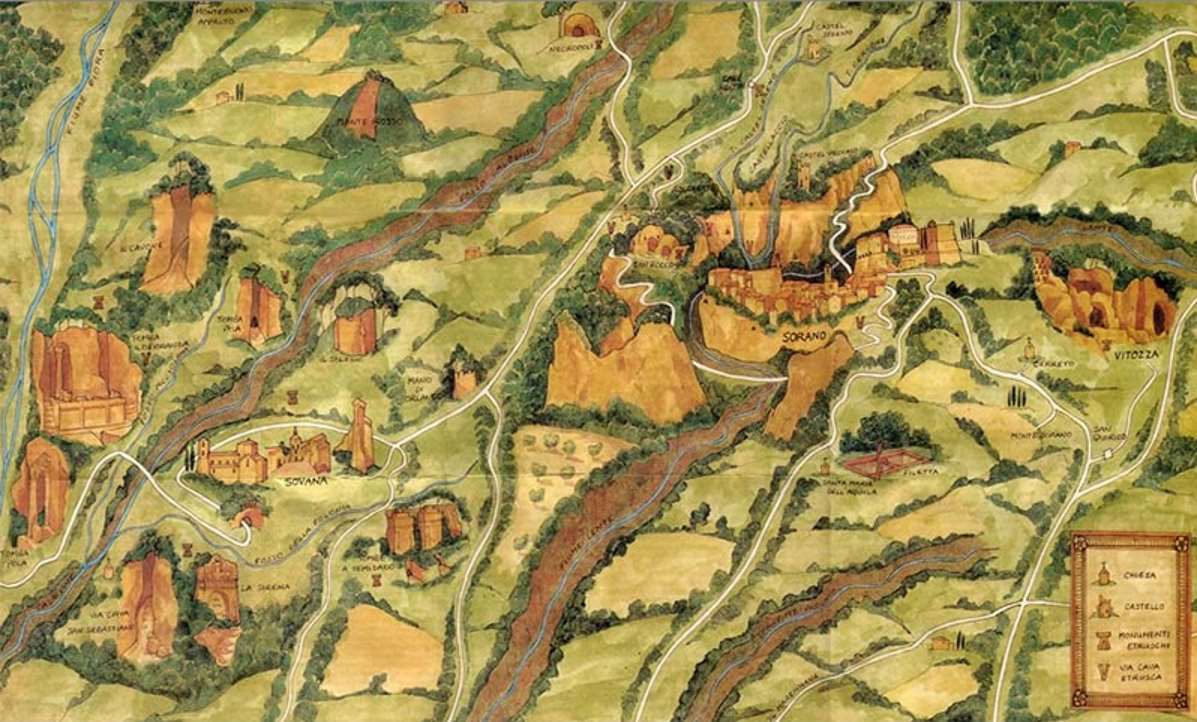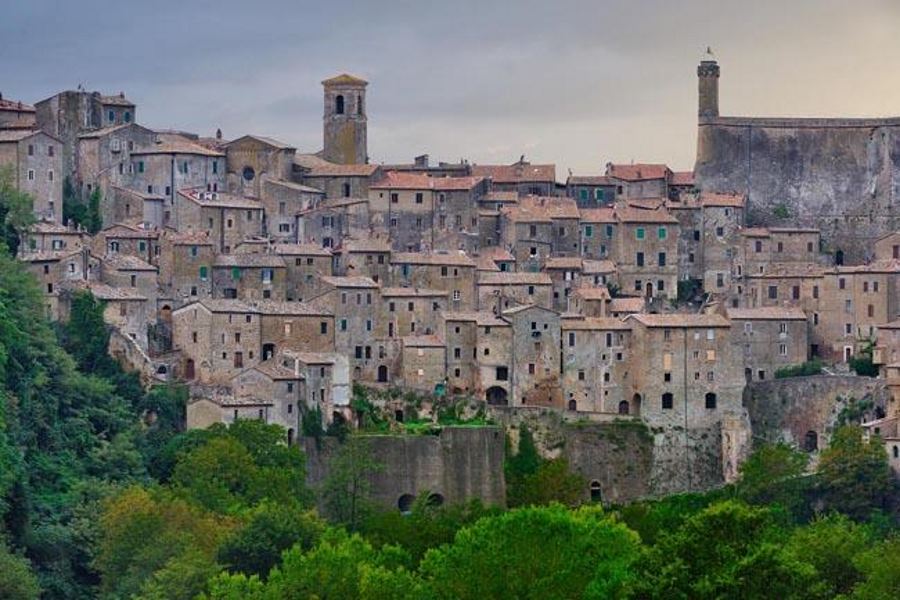SORANO and its GENIUS LOCI
The following text is taken from the book by A. Carrucoli, CIOFRO "IL PROFETA", published by the Municipality of Sorano in 1995. With the kind permission of the author, we invite you on a symbolic walk through the streets and history of Sorano.
"Today, anyone driving down the winding San Rocco road and reaching the Lente bridge will see, to the left, an old grey village perched on a tongue of tuff rock between the hills, dominated by the imposing silhouette of the Orsini Fortress with the adjacent Ricci-Busatti Palace. This is the ancient part of old Sorano, a small village in the province of Grosseto, at the foot of which the Lente River – a tributary of the Fiora – flows through rugged tuff ravines, playing with colours and little waterfalls."
"The silhouette of the old village is nearly identical to what farmers once saw when they ventured down from San Rocco into the spectacular Etruscan hollow road, winding deep into the tuff and ending where the streams Cercone and Castel Sereno flow into the Lente. From there, they would climb up and enter Sorano through the so-called 'Gate of the Battlements'."
Sorano can be reached from Pitigliano, San Quirico, Montorio and Sovana, yet the old town remains hidden from view – nestled deep within one of the many tuff ravines that naturally open toward the nearby Fiora valley.
Driving along the provincial road from Pitigliano to Sorano, one can glimpse – setting aside the new houses and a few modern villas – only the compact, massive Orsini Fortress. It appears low-built because it seems to sit level with the surrounding landscape – like an island emerging from a still sea.
And there, below in one of these tuff ravines, lies old Sorano. It hides its houses until the very last, which climb the rock in layers. To reach the historic center, one starts from Piazza della Fonte – once home to the town's public fountains – through the Ferrini Arch (the old upper gate), following Via Giovanni Selvi (which becomes Via Roma at the "Orso" crossing), climbing steeply toward the old Piazza della Fontana – formerly Piazza Vittorio Emanuele, now Piazza Vanni – with its fountain nestled in a concave wall. Turning left and following the narrow, winding alley (Via del Borgo), you arrive at the small church of 'Madonna del Buon Consiglio', once regularly opened for votive prayers.
This part of the village is called Borgo and is undoubtedly the most characteristic and evocative area of the historic center. In a compact space and over several levels, connected by bridges and staircases, the people of Sorano built their tall houses – like trees striving for light and air.
In this part of town, one feels swallowed by the narrow, steep streets, winding and intersecting, by the tunnels and countless tuff cellars forming a fascinating labyrinth. In the last century, the Borgo was the most populated area of Sorano – its dense structure creating a social fabric where many families lived together on this tuff outcrop.
Walking down the winding Via del Borgo, you can imagine how the seasons once unfolded in this lively part of town. Scenes full of life, chatter, and excitement in spring and summer, quiet murmurs and slow footsteps on damp autumn days – lit by the joyous grape harvest season.
Then comes winter, with its cold, restless days, enveloping the whole village – yet even in the smallest huts, life flickered by the warm hearth. With these thoughts, I pause before the small church of 'Madonna del Buon Consiglio', between Via del Cimitorio and Via del Borgo. Behind it, at the end of a short descent, stands a modest little house, overshadowed by more small buildings, almost seeming to sink into the ground. In this humble house, Cesare Bandelloni, known as “Ciofro”, was born in 1868.
...just a few steps away lies the cellar of Domenico Papini, known as “il Figlietto”, where, in August 2004, after careful restoration, the enOsteria L'Ottava Rima was born.









